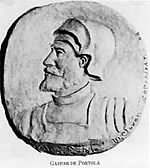Piru Creek
Los Padres National ForestRivers of Los Angeles County, CaliforniaRivers of Southern CaliforniaRivers of Ventura County, CaliforniaSan Emigdio Mountains ... and 4 more
Santa Clara River (California)Santa Ynez MountainsTopatopa MountainsWild and Scenic Rivers of the United States

Piru Creek is a major stream, about 71 miles (114 km) long, in northern Los Angeles County and eastern Ventura County, California. It is a tributary of the Santa Clara River, the largest stream system in Southern California that is still relatively natural. The creek drains an area of about 497 square miles (1,290 km2), making it the Santa Clara River's biggest tributary in terms of watershed size. Most of the creek above Lake Piru is located in the Los Padres National Forest. There are two major reservoirs on Piru Creek, Lake Piru and Pyramid Lake, which respectively store water for local irrigation and the California State Water Project.
Excerpt from the Wikipedia article Piru Creek (License: CC BY-SA 3.0, Authors, Images).Piru Creek
Geographical coordinates (GPS) Address Nearby Places Show on map
Geographical coordinates (GPS)
| Latitude | Longitude |
|---|---|
| N 34.398888888889 ° | E -118.78555555556 ° |
Address
Piru
93040
California, United States
Open on Google Maps







